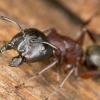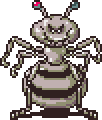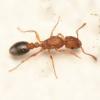Love this guide! I must have read and re-read dozens of times prior to and after purchasing my first A. versicolor colony. Thanks for putting it together!
@Cheeto, has there been any additional learnings gleaned about Versicolor keeping, or leafcutters in general, since this write up was first compiled?
I think it would be awesome to maybe put together a list of common mistakes people make with these ants, or maybe common symptoms and their causes and fixes, etc.
Are there big differences between moisture tolerance for the tropical Atta's versus the desert leafcutters? I've read that neither like standing water in the nesting chamber, which makes sense because they raise the same fungus, so if it doesn't like direct contact with water for one, it won't with the other either. It seems like the extremely different environments these species are found in would mean that they have evolved to deal with moisture or lack of moisture differently. (For example Versicolors hanging their fungus from the ceiling). But, aside from fungus die off causing a lack of food for the workers, is there anything else about too much moisture or oversaturated plaster that might be deadly to workers for instance? Maybe the growth of other non-beneficial fungus or pathogens that are harmful to the ants? What behaviors would you expect to see from the workers in a colony that is dealing with too much water in the chamber? Do the ants do anything to combat it? Or ignore it?
I've ready elsewhere that it's almost impossible to over-hydrate a petri-dish or deli cup style founding formicarium. Would you say that's true? Or should we limit the hydration to some level? Should moisture be visible on the surface of the plaster or should the plaster just be saturated enough to change its color, for example?
Sorry if i'm asking a lot, but this seems like the perfect place to add on any additional observations anyone has made lately. Especially if people have made mistakes and learned from them!
Thanks for any input anyone can provide!
EDIT: Fixed capitalization of A. versicolor.
Edited by cutchins, March 1 2024 - 9:17 PM.


























